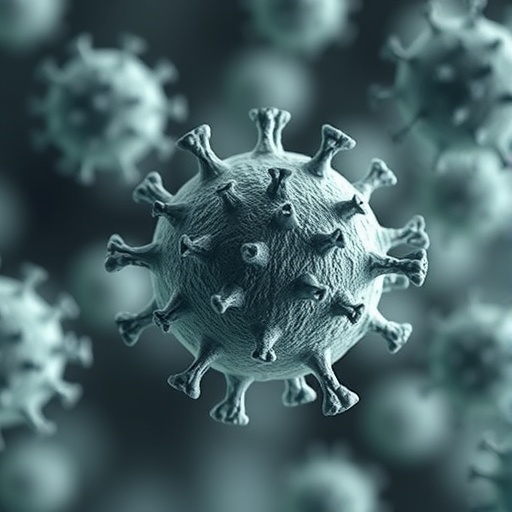A recent study funded by the National Institutes of Health (NIH) and conducted by an interdisciplinary team from Johns Hopkins Medicine, the Johns Hopkins Bloomberg School of Public Health, and The Johns Hopkins University Whiting School of Engineering sheds new light on the complex interaction between the immune system and SARS-CoV-2, the virus responsible for COVID-19. With neutrophils, the most prevalent type of white blood cells in humans, taking center stage, researchers have unearthed findings that may explain why some individuals experience severe forms of COVID-19 while others have comparatively milder infections.
Neutrophils are typically known for their essential role in the innate immune response, serving as the first line of defense against invading pathogens. They have a remarkable ability to destroy bacteria and other harmful microorganisms, essentially acting as the body’s defense warriors. However, the dynamics change when the body encounters SARS-CoV-2. According to the study’s senior author, Dr. Andrea Cox, neutrophils appear to undergo a significant reprogramming process that compromises their ability to combat the virus effectively. Instead of executing their regular immune functions, these cells transform into polymorphonuclear myeloid-derived suppressor cells (PMN-MDSCs), which paradoxically inhibit the actions of other immune cells crucial for viral defense.
The transition of neutrophils into PMN-MDSCs raises critical questions about the broader implications for immune health during COVID-19 infections. Historically, PMN-MDSCs have been linked to various conditions such as cancer, where they play a role in suppressing T lymphocytes—our body’s primary immune fighters. This study suggests that a similar mechanism might be at play in severe COVID-19 cases, wherein PMN-MDSCs actively hinder T cell function and effectiveness during viral threats.
Notably, previous research hinted at elevated neutrophil counts in patients who develop severe manifestations of COVID-19, prompting the researchers to delve deeper into this association. Dr. Leon Hsieh, the study’s lead author, noted that the team aimed to determine if these neutrophils were indeed being reprogrammed by the virus and whether this transformation contributed to the deterioration of the immune response. Utilizing blood samples from hospitalized COVID-19 patients, they compared the neutrophils of individuals who developed severe symptoms with those of healthy controls, revealing stark differences in their functionality.
The findings revealed that the neutrophils from patients with severe COVID-19 displayed significant degranulation and differentiation into PMN-MDSCs. This process, which involves the release of granular contents into the extracellular space, impairs the immune system’s capacity to detect and counteract the viral threat effectively. The study potentially represents a pioneering observation of PMN-MDSCs in a respiratory viral infection, challenging preconceived notions about the role of neutrophils in viral diseases.
A closer examination revealed that PMN-MDSCs possess surface proteins known to negatively influence T cell activity. Among these are lectin-type oxidized low-density lipoprotein receptor-1 (LOX-1) and programmed cell death ligand 1 (PD-L1), with the latter being particularly notorious for its role in dampening T cell activation. By binding to the PD-1 receptor on T cells, PD-L1 inhibits crucial processes such as T cell proliferation and the release of signaling proteins known as cytokines, which are pivotal in orchestrating the immune response against infections.
The research team took their investigations a step further by co-culturing neutrophils with SARS-CoV-2 in laboratory conditions. The results were telling: the neutrophils underwent differentiation into PMN-MDSCs capable of suppressing T cell proliferation and diminishing cytokine production, thereby weakening the immune response. Interestingly, when the researchers subjected neutrophils to the H1N1 influenza virus, they did not observe a similar conversion to PMN-MDSCs, suggesting that SARS-CoV-2 exhibits unique pathogenic strategies that may not be replicated by other viruses.
In light of these findings, Dr. Cox emphasized the necessity of understanding how SARS-CoV-2 prompts such drastic changes in neutrophil behavior and the potential therapeutic avenues that could arise from this knowledge. For instance, the study explored the possibility of leveraging antibodies against PD-L1, which have been previously used in cancer therapies, to mitigate the immune suppression caused by PMN-MDSCs in COVID-19 patients. In laboratory experiments, the introduction of PD-L1 antibodies resulted in reduced T cell suppression and enhanced T cell activity, indicating a possible multi-faceted approach to combatting severe COVID-19.
By offering insights into the immune system’s malfunctions induced by SARS-CoV-2, this research not only contributes to the foundational understanding of COVID-19 pathogenesis but also heralds the potential for novel therapeutic strategies. The findings position researchers to investigate how existing treatments can be optimized and possibly combined with antiviral medications to improve outcomes for patients facing severe disease.
Understanding these immune responses lays the groundwork for future research aimed at unraveling the complexities of COVID-19, particularly in populations at higher risk due to age or comorbidities. Importantly, uncovering the mechanisms behind neutrophil transformation may also lead to greater insights into the myriad ways infectious diseases can manipulate the immune system for their advantage.
As researchers continue to uncover the nuances of immune interactions with SARS-CoV-2, the hope is to identify markers that can predict disease severity, ultimately leading to tailor-made treatment plans that enhance recovery and survival. In this ongoing battle against COVID-19, the study stands out as a crucial step toward empowering the immune system to reclaim its defensive capabilities.
In conclusion, the transformational impact of SARS-CoV-2 on neutrophil function illustrates the intricacies of immune evasion strategies employed by viruses. With knowledge derived from this essential work, the pathway toward innovative therapeutic solutions for severe COVID-19 becomes clearer, holding promise for future research and enabling more effective health responses to viral infectious diseases.
Subject of Research: Transformation of Neutrophils by SARS-CoV-2
Article Title: New Insights into Neutrophil Transformation: The Role of SARS-CoV-2 in Severe COVID-19
News Publication Date: (Not Provided)
Web References: (Not Provided)
References: (Not Provided)
Image Credits: (Not Provided)




